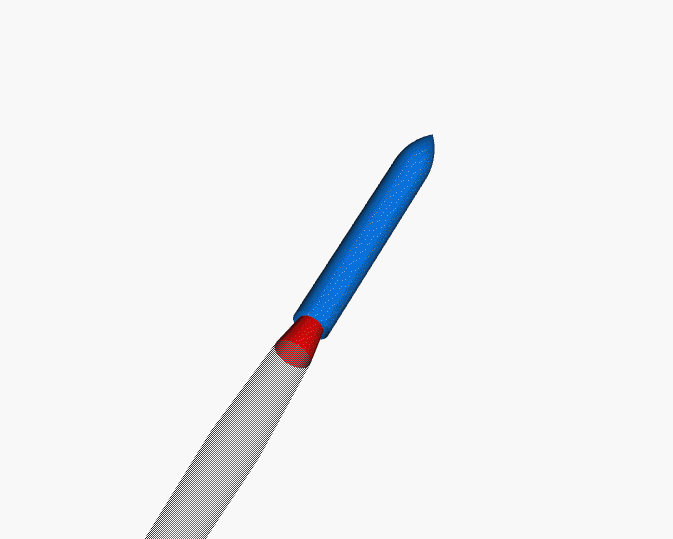Gimbaled Thrust on:
[Wikipedia]
[Google]
[Amazon]

 Gimbaled thrust is the system of
Gimbaled thrust is the system of
 Gimbaled thrust is the system of
Gimbaled thrust is the system of thrust vectoring
Thrust vectoring, also known as thrust vector control (TVC), is the ability of an aircraft, rocket, or other vehicle to manipulate the direction of the thrust from its engine(s) or motor(s) to control the attitude or angular velocity of the v ...
used in most rocket
A rocket (from it, rocchetto, , bobbin/spool) is a vehicle that uses jet propulsion to accelerate without using the surrounding air. A rocket engine produces thrust by reaction to exhaust expelled at high speed. Rocket engines work entirely fr ...
s, including the Space Shuttle
The Space Shuttle is a retired, partially reusable low Earth orbital spacecraft system operated from 1981 to 2011 by the U.S. National Aeronautics and Space Administration (NASA) as part of the Space Shuttle program. Its official program na ...
, the Saturn V
Saturn V is a retired American super heavy-lift launch vehicle developed by NASA under the Apollo program for human exploration of the Moon. The rocket was human-rated, with multistage rocket, three stages, and powered with liquid-propellant r ...
lunar rockets, and the Falcon 9
Falcon 9 is a partially reusable medium lift launch vehicle that can carry cargo and crew into Earth orbit, produced by American aerospace company SpaceX.
The rocket has two stages. The first (booster) stage carries the second stage and payl ...
.
Operation
In agimbal
A gimbal is a pivoted support that permits rotation of an object about an axis. A set of three gimbals, one mounted on the other with orthogonal pivot axes, may be used to allow an object mounted on the innermost gimbal to remain independent of ...
ed thrust system, the engine or just the exhaust nozzle
A nozzle is a device designed to control the direction or characteristics of a fluid flow (specially to increase velocity) as it exits (or enters) an enclosed chamber or pipe.
A nozzle is often a pipe or tube of varying cross sectional area, a ...
of the rocket can be swiveled on two axes (pitch and yaw ) from side to side. As the nozzle is moved, the direction of the thrust is changed relative to the center of gravity
In physics, the center of mass of a distribution of mass in space (sometimes referred to as the balance point) is the unique point where the weight function, weighted relative position (vector), position of the distributed mass sums to zero. Thi ...
of the rocket.
The diagram illustrates three cases. The middle rocket shows the straight-line flight configuration in which the direction of thrust is along the center line of the rocket and through the center of gravity of the rocket. On the rocket at the left, the nozzle has been deflected to the left and the thrust line is now inclined to the rocket center line at an angle called the gimbal angle. Since the thrust no longer passes through the center of gravity, a torque is generated about the center of gravity and the nose of the rocket turns to the left. If the nozzle is gimbaled back along the center line, the rocket will move to the left. On the rocket at the right, the nozzle has been deflected to the right and the nose is moved to the right.
References
*{{cite web, url=https://www.grc.nasa.gov/www/k-12/rocket/gimbaled.html, title=Gimbaled Thrust, work=Beginner's Guide to Rockets, author=NASA, accessdate=2006-01-07 Public domain source. Rocket engines